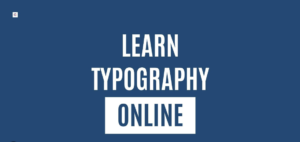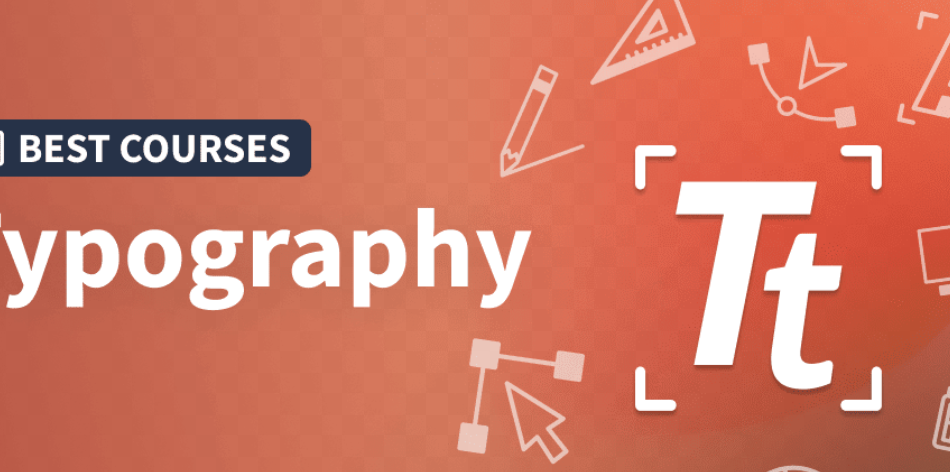Typography is the art and technique of arranging type to make written language legible, readable, and appealing when displayed. It involves the selection of typefaces, point sizes, line lengths, line-spacing (leading), and letter-spacing (tracking), and adjusting these elements for maximum readability and aesthetic appeal. Typography is an essential component of graphic design, web design, and various other forms of visual communication.

Typography Courses
Contents
- 1 Importance of Typography in Design
- 2 History of Typography
- 3 Understanding Different Typography Terms
- 4 Elements of Typography
- 5 Choosing the Right Typeface
- 6 Typography Hierarchy and Layout
- 7 Typography in Web Design
- 8 Typography in Print Design
- 9 Top Typography Courses to Enhance Your Skills
- 10 Benefits of Taking Typography Courses
- 11 Conclusion
Importance of Typography in Design
In the world of design, typography plays a crucial role in conveying messages, evoking emotions, and creating a lasting impression. The choice of typeface, font size, and layout can significantly impact the overall aesthetic and effectiveness of a design. Well-executed typography can enhance the readability, legibility, and visual hierarchy of a design, making it more engaging and impactful for the audience.
History of Typography
The history of typography can be traced back to the invention of the printing press in the 15th century. Since then, the evolution of typography has been shaped by technological advancements, cultural influences, and the creative vision of designers and typographers. From the elegant serifs of Garamond to the modern minimalism of Helvetica, the history of typography is a fascinating journey that continues to inspire and influence contemporary design.
Understanding Different Typography Terms
To fully grasp the art of typography, it’s essential to familiarize oneself with the various terms and concepts associated with it. These include:
- Typeface: A collection of characters, numbers, and symbols that share a common design
- Font: A specific size and style of a typeface
- Serif: The small strokes at the ends of the main strokes in a letter
- Sans-serif: Typefaces without the small strokes at the ends of the main strokes
- Kerning: The spacing between individual characters
- Tracking: The overall spacing between all the characters in a piece of text
- Leading: The vertical spacing between lines of text
Understanding these terms and their applications will help you make informed decisions when working with typography.
Elements of Typography
The key elements that define the art of typography include:
- Typeface Selection: Choosing the appropriate typeface(s) that align with the overall design aesthetic and convey the desired mood or message.
- Font Pairing: Combining complementary typefaces to create visual interest and hierarchy within the design.
- Hierarchy and Emphasis: Establishing a clear visual hierarchy through the use of different font sizes, weights, and styles.
- Alignment and Spacing: Ensuring proper alignment and adjusting the spacing between characters, words, and lines to enhance readability and aesthetics.
- Contrast and Harmony: Balancing the use of contrasting typefaces, sizes, and styles to create visual interest while maintaining overall harmony.
Mastering these elements is crucial for creating effective and visually appealing typography.
Choosing the Right Typeface
Selecting the right typeface is a crucial decision in typography. Factors to consider include:
- The overall design style and tone
- The target audience and their preferences
- The purpose and context of the design
- The legibility and readability of the typeface
- The availability and compatibility of the typeface across different platforms
Experimenting with various typefaces and understanding their unique characteristics can help you make informed decisions that enhance the overall design.
Typography Hierarchy and Layout
Establishing a clear hierarchy and layout is essential for effective typography. This involves:
- Identifying the primary, secondary, and tertiary elements of the design
- Determining the appropriate font sizes, weights, and styles for each level of hierarchy
- Arranging the typographic elements in a visually appealing and logical manner
- Ensuring consistent spacing and alignment throughout the design
By mastering the principles of typographic hierarchy and layout, designers can create designs that are visually engaging and easy to navigate.
Typography in Web Design
In the digital age, typography plays a crucial role in web design. Considerations include:
- Selecting web-safe fonts that are compatible across different devices and browsers
- Optimizing font sizes and line spacing for optimal readability on screens
- Incorporating responsive design principles to ensure consistent typography across various screen sizes
- Utilizing typographic hierarchy and layout to guide the user’s attention and enhance the overall user experience
Effective web typography can significantly improve the usability and aesthetics of a website, making it an essential skill for modern designers.
Typography in Print Design
While the principles of typography apply to both digital and print media, there are some unique considerations for print design:
- Choosing high-quality typefaces that reproduce well in print
- Accounting for the physical properties of the printing medium, such as paper texture and ink absorption
- Adjusting tracking, kerning, and leading to ensure optimal readability in the printed format
- Incorporating typographic elements, such as drop caps, pull quotes, and ornaments, to enhance the visual appeal of the design
Mastering the art of typography in print design can elevate the overall look and feel of printed materials, from magazines and brochures to books and posters.
Top Typography Courses to Enhance Your Skills
To hone your typography skills and stay up-to-date with the latest trends and techniques, consider enrolling in one of the following top-notch typography courses:
- Typography Masterclass by Skillshare: This comprehensive course covers the fundamentals of typography, including typeface selection, font pairing, and layout design. It’s perfect for both beginners and experienced designers.
- Typography for Web Designers by Udemy: This course focuses on the specific challenges and best practices of typography in web design, equipping students with the knowledge to create visually stunning and user-friendly digital experiences.
- Typography Essentials by Domestika: Explore the history, theory, and practical application of typography through this in-depth course. It delves into the nuances of typeface selection, typographic hierarchy, and creative typographic solutions.
- Typography Masterclass by Pluralsight: This comprehensive course covers a wide range of typography topics, from the fundamentals to advanced techniques. It’s designed for designers, developers, and anyone interested in mastering the art of typography.
- Typography Foundations by LinkedIn Learning: This introductory course provides a solid foundation in typography, covering the basics of typeface selection, font pairing, and typographic hierarchy. It’s an excellent starting point for those new to the field.
Elevate your design skills and master the art of typography by enrolling in one of these top-notch courses today. Unlock your creative potential and take your designs to new heights!
Benefits of Taking Typography Courses
Investing in typography courses can provide a multitude of benefits for designers, marketers, and anyone involved in visual communication:
- Improved Design Skills: Mastering the principles of typography can significantly enhance your overall design abilities, allowing you to create more visually appealing and effective designs.
- Increased Versatility: Understanding typography equips you with the knowledge to adapt your designs across various mediums, from print to digital, ensuring consistent and coherent visual communication.
- Enhanced Creativity: Exploring the history, trends, and techniques of typography can inspire you to experiment with new typographic solutions and push the boundaries of your creative expression.
- Competitive Advantage: Possessing specialized typography skills can give you a competitive edge in the design industry, making you a more valuable asset to employers or clients.
- Improved Communication: Effective typography can enhance the clarity and impact of your visual messaging, helping you communicate your ideas more effectively with your target audience.
By investing in typography courses, you can unlock a world of possibilities and elevate your design work to new heights.
Conclusion
Typography is a fundamental aspect of design that requires a deep understanding of both technical and creative elements. By mastering the art of typography, designers can create visually stunning and highly effective designs that captivate audiences and convey their intended messages with clarity and impact.
Whether you’re a seasoned designer or just starting your creative journey, exploring top-notch typography courses can help you hone your skills, expand your creative horizons, and stay ahead of the curve in the ever-evolving world of design. Embrace the power of typography and unlock your full potential as a designer.
